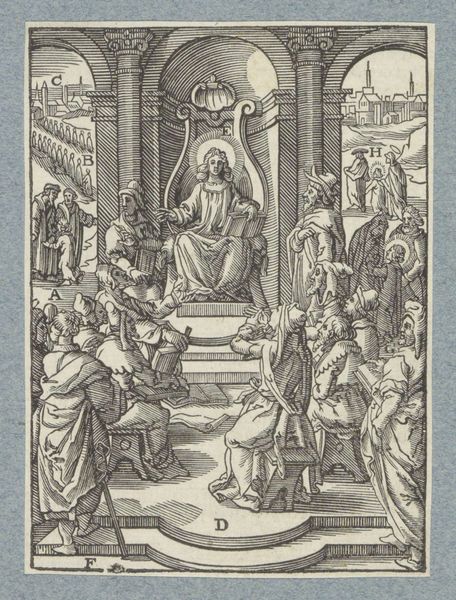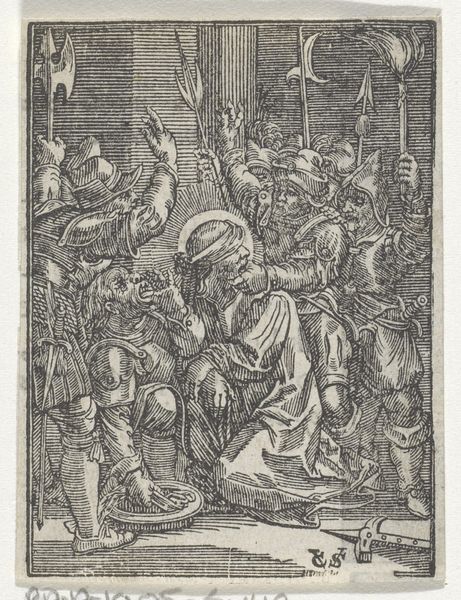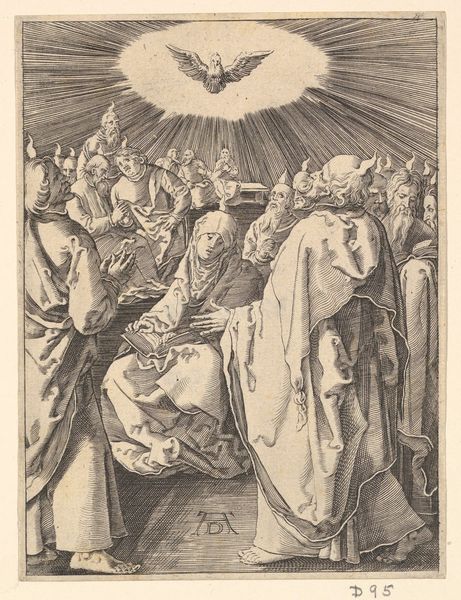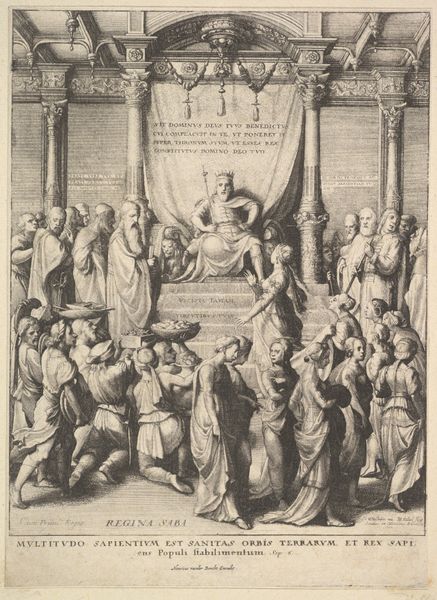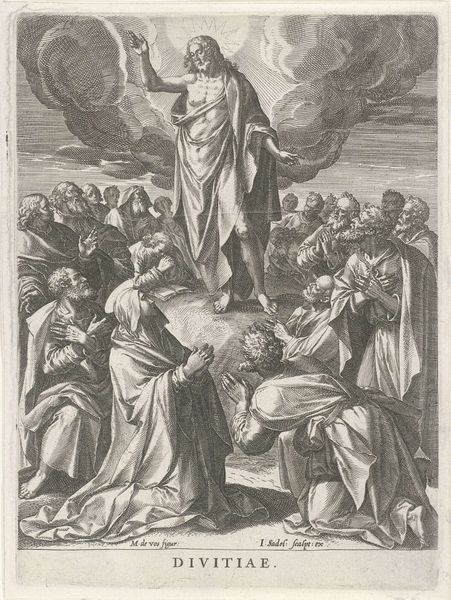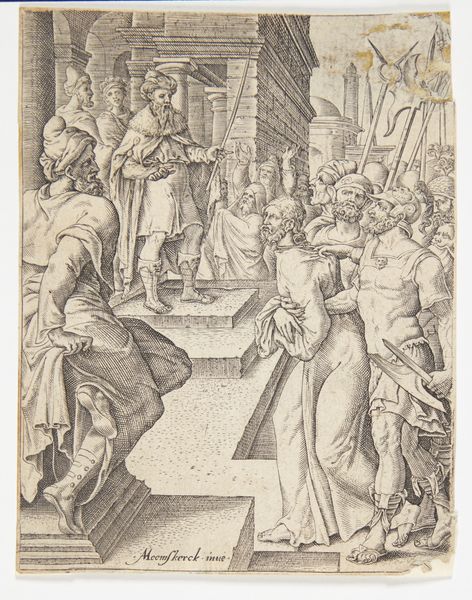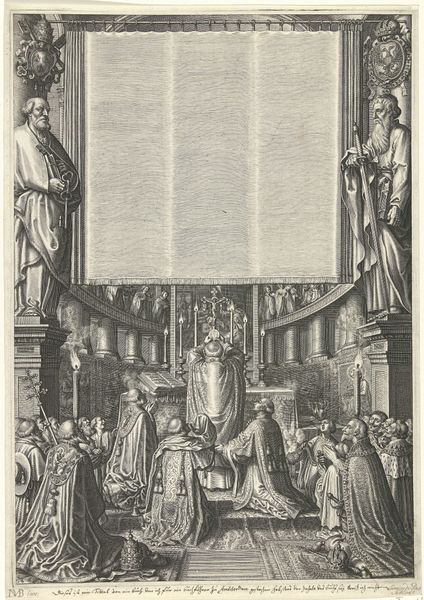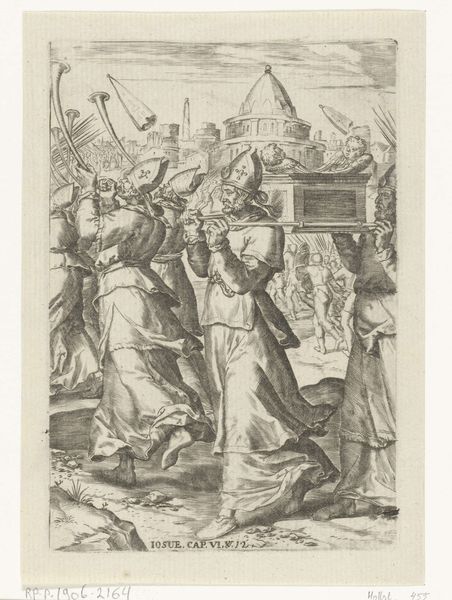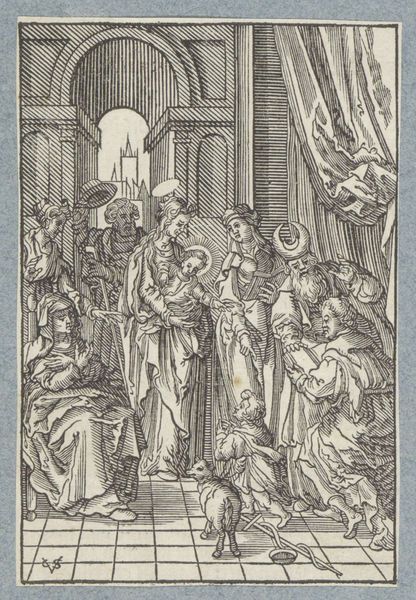
print, engraving
#
medieval
# print
#
figuration
#
line
#
history-painting
#
engraving
Dimensions: height 310 mm, width 204 mm
Copyright: Rijks Museum: Open Domain
Curator: This intricate engraving is titled "Petrus, Johannes en Paulus door andere heiligen omgeven" - "Peter, John and Paul Surrounded by Other Saints". It was created sometime between 1571 and 1632 by Antoni van Leest. Editor: It strikes me as quite formal, almost ritualistic. The linear style gives it a real sense of gravity. And it's fascinating how densely packed with figures it is! Curator: Exactly. The work resonates with the artistic conventions of medieval and early Renaissance history painting. Notice the thematic focus on religious figuration, and consider how the engraving participates in a broader narrative of religious and social power. Who gets depicted, and how, matters enormously. Editor: Absolutely, and I'm immediately drawn to the craftsmanship. Think about the labor involved in meticulously etching those lines! It brings up questions of value, doesn’t it? The cost of materials, the artisan's skill, the function as a piece of devotional art… it’s all interwoven. Curator: Consider how the placement of the Holy Spirit at the apex symbolically reinforces divine authority over the scene below, which reinforces the power structures in the depicted scene and the role of religion within a deeply stratified society. Editor: And observe that almost austere presentation. There is this deliberate starkness to the use of line, almost drawing our attention to the materiality of the printmaking itself and, dare I say, democratizing the image. These prints were designed for wider dissemination than perhaps panel paintings or tapestries. Curator: Indeed! By exploring the visual representation of holy figures and biblical narratives, we can learn about shifts in ideology and the ongoing contestations over authority within a specific time. Editor: Precisely. It reveals how art functions not just as a visual spectacle, but as a tangible, reproducible object embedded within networks of commerce and belief. Studying process unlocks a broader material understanding. Curator: Looking at the legacy and historical setting really allows us to see the ways this piece creates complex conversations on cultural and societal identity that it embodies. Editor: Right, shifting our perception beyond a singular moment. For me it's a prompt to examine the means and conditions behind its production and consumption.
Comments
No comments
Be the first to comment and join the conversation on the ultimate creative platform.
